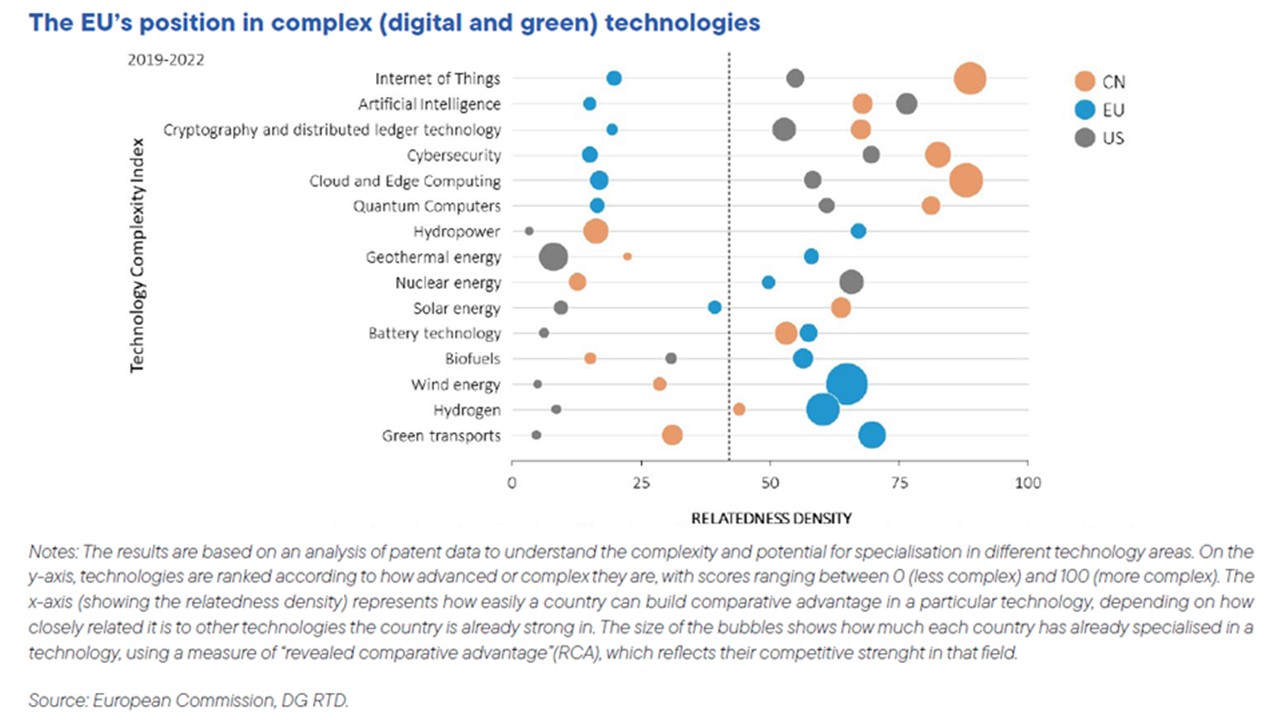Europe’s competitiveness problem #2
3 min
The European Union is facing a competitiveness challenge, mainly due to rising energy costs. But this is not the only hurdle. Subsidies in other countries continue to favour energy-intensive industries. For example, China provides more than 90% of the $70 billion in global subsidies for the aluminium sector, while its steel industry also receives significant support. In addition, China and the United States have much less ambitious decarbonisation targets than Europe.
The European car industry
The painful restructuring of the automotive sector is a wake-up call. This sector also highlights Europe’s lack of planning, where a climate policy has been implemented without an accompanying industrial policy. Europe’s ambitious goal is to reduce exhaust emissions to zero by 2035, leading to the rapid adoption of electric vehicles (EVs). However, the EU has not adequately addressed the supply chain implications of these ambitions. For example, the European Commission only launched the European Battery Alliance in 2017, and Europe lags significantly behind in the deployment of EV charging infrastructure.
By contrast, China has been focusing on the entire EV charging ecosystem since 2012, and on a much larger scale. As a result, China has a generational advantage in nearly every area of EV technology, as well as significantly lower production costs. The impact has been dramatic: Chinese automakers’ market share in Europe has risen from 5% in 2015 to nearly 15% in 2023. Meanwhile, European carmakers’ share of the European EV market has fallen from 80% to 60%. European companies are losing market share, a trend that could accelerate as China removes bottlenecks in car transport.
Is European industry doomed?
Is European industry destined to disappear? Not necessarily. While Europe has limited influence in many technologies, this is not true for technologies essential to the energy transition. Decarbonisation represents a major opportunity for Europe. The continent is a world leader in developing clean technology and circular economy solutions.
According to the International Energy Agency, more than a third of the global CO2 emission reductions needed by 2050 will depend on technologies that are currently at the demonstration or prototype stage. Europe also leads in transitioning electricity production to safe, affordable, and clean energy sources. The continent is rich in natural resources, with plenty of sunshine in the south and wind in the north and south-east. Renewable energy currently accounts for 22% of the EU’s gross energy consumption, compared to 14% in China and 9% in the United States. The EU aims to increase this to a at least 42.5%, by 2030, which will require a tripling of solar capacity and more than doubling of wind capacity.

A competitiveness plan
Achieving this ambition will only be possible only if decarbonisation and competitiveness plans are launched simultaneously, in line with EU objectives. The Draghi report highlights three key priorities:
- A gradual energy transition
The energy transition will take time, with fossil fuels continuing to play a central role in energy pricing for the rest of this decade. The burden on energy-intensive industries needs to be reduced. End-user energy costs should be reduced by passing on the benefits of accelerated decarbonisation, such as breaking the strong link between electricity prices and natural gas spot prices. An accelerated decarbonisation of the energy sector provides an additional lever.
- Strengthening Europe’s leadership in clean technologies
The EU’s current leadership in developing clean technologies needs to be reinforced on a larger, pan-European scale. The same applies to the opportunities offered by the emerging circular economy.
- Ensuring a level playing field
Conditions must be created to level the playing field for sectors facing unfair competition from abroad or stricter carbon targets than their international competitors. This can be achieved through tariffs or other trade measures. By taking these steps, Europe can address its competitiveness challenges and turn its ambitious climate goals into an economic advantage.
The opinions in this blog are those of the authors and do not necessarily reflect the position of BNP Paribas Fortis.


